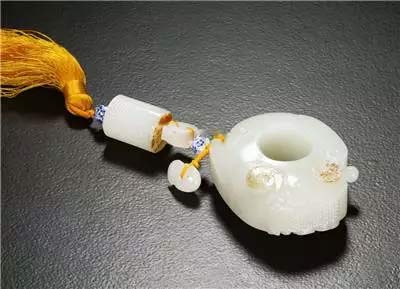Jade culture (streamlined)
The jade in the eyes of the Chinese is different. It has transcended the category of simple taxonomy and has become the spiritual sustenance of the Chinese ethnic group.
In the eyes of ordinary people, jade is a stone. According to the mineralogy classification, jade can be divided into two types, one is the hornblende group in the bond silicate, also called nephrite. There is also a single-chain silicate alkaline clinopyroxene, also known as jadeite (such as jadeite). Most of the traditional jade in China is nephrite, including Xinjiang jade, jade jade, etc. In the early Qing Dynasty, Wu Sangui pursued the emperor of Nanming Yongli and entered the mining area rich in jade in Yunnan and northern Myanmar. stand up.
As early as the late Paleolithic period nearly 10,000 years ago, the Chinese ancestors discovered and began to use jade. It is generally believed that people in ancient times discovered jade minerals when making and using stone tools. It has a distinctive color and brilliance, crystal clear and fascinating, so people slowly use it to make decorations. Because the number of jade is not many and the processing is difficult, only a few heads in the ethnic group, such as the patriarch and the priest, are qualified to wear and use it, which in turn makes it evolve into a ritual, a ritual or a totem. It is in this long and slow evolution that jade is transformed from a stone of a special nature into a symbol of power, status, wealth, and theocracy.

Today, we see that most of the ancient jade in prehistoric times are jade tools such as jade knives, jade axes, and jade needles. Then there will be jade rituals (the rituals) such as the Yuzong culture of the Liangzhu culture, the three-fork type, and some jade figures like the jade dragon and jade pig of the Hongshan culture, which should be made as the totem of the ethnic group. The jade of this period is not entirely made of jade, which is referred to by modern meaning. It can be jade or just a beautiful stone, such as the tremolite ore that is symbiotic with the metamorphic marble. In the late Neolithic period to the Bronze Age, it was no longer difficult to see jade tools in the mainstream cultural areas of China. Instead, there were a large number of jade and jade accessories, such as the jade dragon and jade unearthed from the Shang Dynasty. Wind, jade crane. At this time, nephrite has been widely used to make utensils.
From the old three generations from Qin Han to Sui and Tang Dynasties, jade articles have always been the exclusive decorative items of the royal family. During the two Song Dynasty, the economy was developed and the business was prosperous. Due to the advancement of handicraft technology, jade processing became more convenient and fast, and the jade and jade winds were flourishing. At this time, there were a large number of jade ornaments and jade pieces that were exquisitely crafted, delicately processed, and wonderfully conceived.
In the Ming and Qing Dynasties, jade making and playing rewards reached its peak, and the variety was more colorful. It was as small as Yutou, jade button, and the whole piece of Yupingfeng, Yushan and Yushu. The royal family also used jade to make Japanese utensils such as jade bowls, jade cups, jade pots and so on. In general, the jade is made of white jade (especially the white jade white jade produced in Xinjiang), followed by topaz, jade again, and jade (such as southern jade, Henan jade).
At the beginning of the Qing Dynasty, jade was introduced into the Central Plains, and its touching greenery immediately won the hearts of the Chinese people. The jade ornaments made of jadeite are popular and become the fashion that people sometimes chase. But in the eyes of the traditional Chinese, jade ornaments made of jade are far less than ancient jade. Until today, if we pick up an emerald, we will only evaluate its color, its texture, and its production. But when we see an ancient jade, appreciate its shape, its twilight, its material, but the heart will rise, but it will be a strong national pride. The reason is because the ancient jade is pregnant. It contains the precipitation of the five thousand years of Chinese civilization and the national spirit of the descendants of the Yellow Emperor.
Women's t-shirts:we have various kinds of styles for ur choice,at present,solid color and daisy printed design is our new fashion,this two fabric content is 95%cotton 5%spandex,solid color :white,pink,yellow,iron grey,daisy printed:white,pink,black,yellow,iron grey,if u are interested in our products or would like to learn more details,please contact us directly,we will try our best to do well.
Bell Sleeve Shirts,Knitted Fabric Shirts,Women'S Striped T-Shirts,Strapless Sleeve T-Shirts
Shaoxing PinSheng Garment co,ltd , https://www.psfsshirts.com
